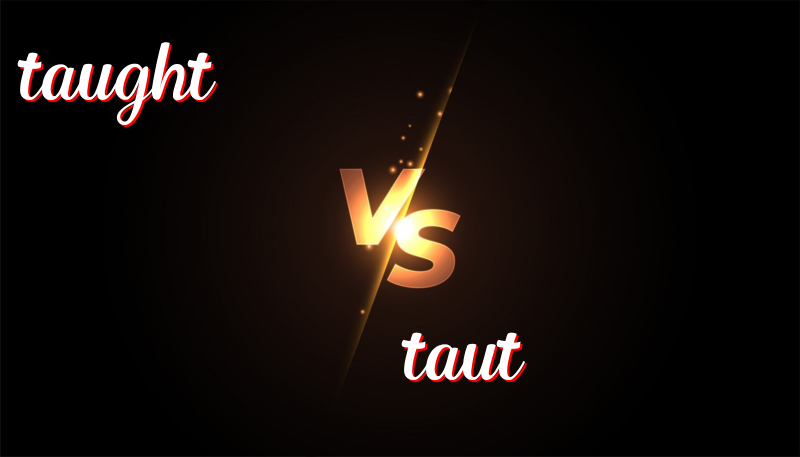英語單詞taught 與 taut的區別
November 03, 2024
解析”Taught”與”Taut”之間的差異
英語中,”taught”與”taut”是兩個發音相近但意義完全不同的單詞。這篇文章將詳細說明這兩個詞的歷史、使用方法以及區分小技巧。
詞源歷史
“Taught”是動詞”teach”的過去式和過去分詞,意為教授或教導,來源於古英語的”tǣcan”。而”taut”是一個形容詞,意為拉緊的或緊繃的,來源於中世紀英語的”tought”,取自古挪威語的”thottr”。
如何使用這些詞
Taught
“Taught”用於表示曾經教授或教學的行為,一般用作動詞的過去式。
- She taught English at the local high school for ten years.
她在當地的高中教授了十年的英語。 - He taught me how to play the piano.
他教我如何彈鋼琴。 - They taught the children to respect the environment.
他們教孩子們尊重環境。 - The book taught valuable life lessons.
這本書教會了寶貴的人生課程。 - My grandfather taught me how to fish.
我祖父教我如何釣魚。
Taut
“Taut”作為形容詞,描述一物被拉得很緊或處於緊張狀態。
- The rope was pulled taut to ensure the tent stayed up.
繩子被拉緊以確保帳篷維持在位。 - His muscles were taut with effort as he lifted the weights.
當他舉起重量時,他的肌肉緊繃。 - The sail was taut against the wind.
帆迎著風被拉得很緊。 - She kept a taut smile throughout the interview.
她在整個面試過程中保持著緊繃的微笑。 - The hospital room was filled with a taut silence.
醫院的房間裡充滿了緊張的沉默。
記憶技巧
要記住這兩個詞的區別,您可以聯想到單詞開頭的字母:”Taught”中的”T”可以代表”Teaching”(教導),而”Taut”中的”A”可以讓您想到”Attached”(繫緊)。
結論
總結來說,”taught”涉及教學或指導的行為,通常出現於描述過去的時態中;而”taut”描述某物極度緊繃或拉緊的狀態。理解這兩個詞的區分能在寫作和溝通時幫助您更準確地表達意思。

Leave a Reply
You must be logged in to post a comment.